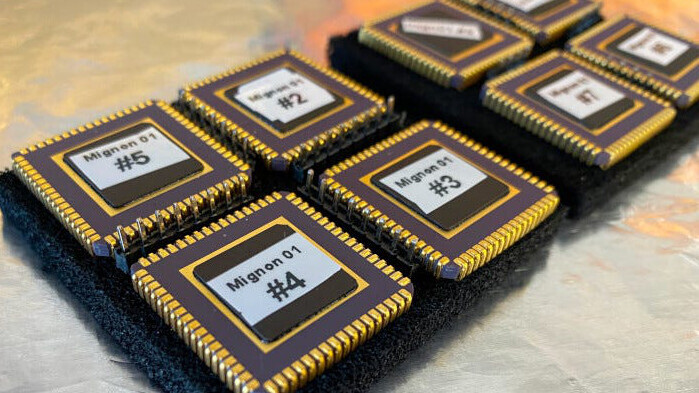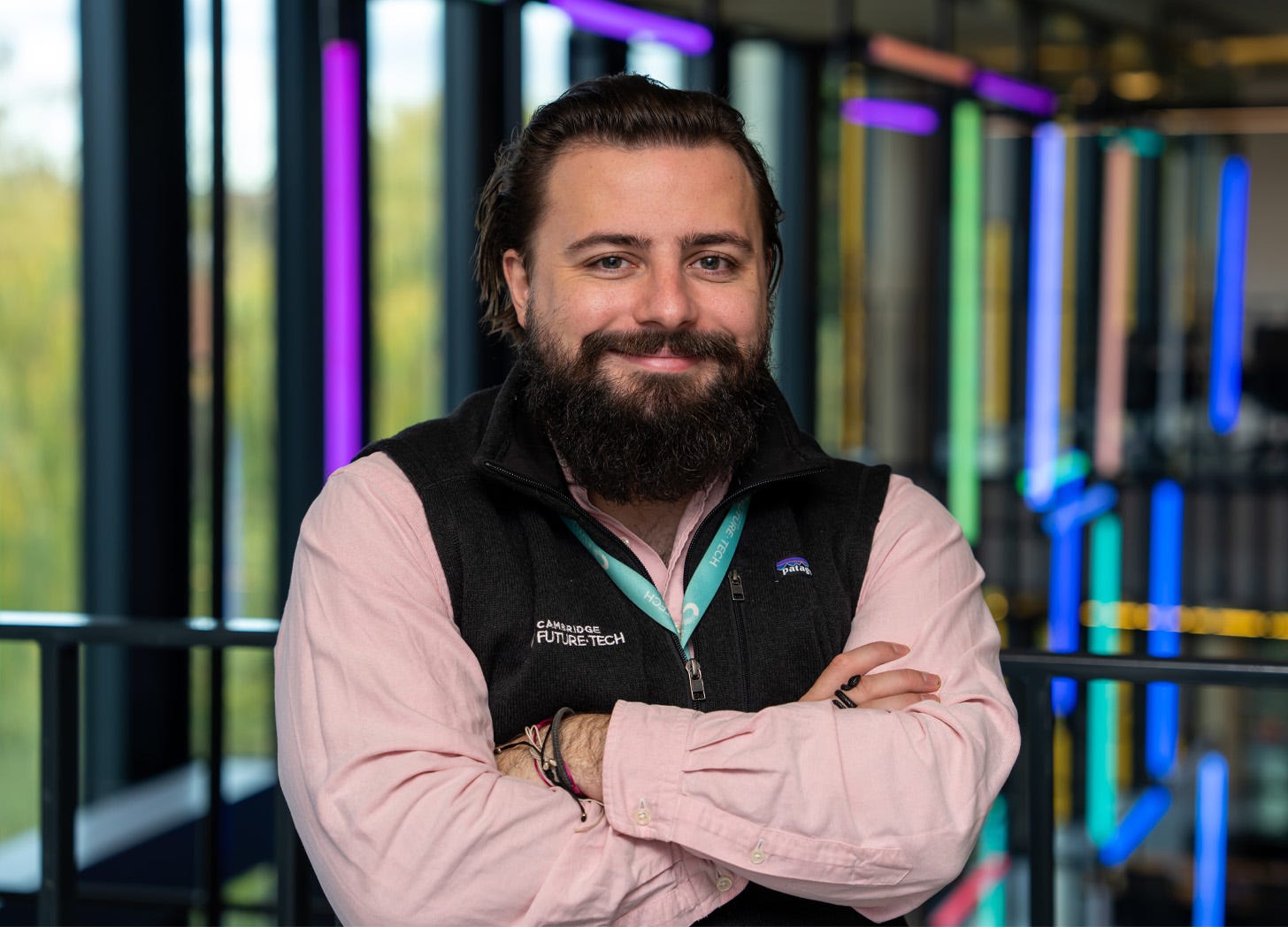
This story is syndicated from the premium edition of PreSeed Now, a newsletter that digs into the product, market, and founder story of UK-founded startups so you can understand how they fit into what’s happening in the wider world and startup ecosystem.
The reignited excitement around the potential of AI as we hurtle into 2023 brings with it concerns about how best to process all the data needed to make it work. This is far from a new challenge though, and next-generation AI chips are being developed in labs around the world to address the challenge in different ways.
One of the first startups we ever covered at PreSeed Now takes a ‘neuromorphic’ approach, influenced by the human brain. Coming from a different direction is a brand new spinout from Newcastle University called Mignon (so new, in fact, that there’s no website yet).
Mignon has developed an artificial intelligence chipset that, according to CEO Xavier Parkhouse-Parker, has “in the order of 10,000x performance improvements against alternative neural-network based chips for classification tasks”
Classification is, essentially, the process of figuring out what the AI is looking at, hearing, reading, etc — the first step in understanding the world around it, whatever use case it’s put to. Mignon’s chipset is designed to be used in edge computing as a “classification coprocessor” on devices, rather than in the cloud.
What’s more, Parkhouse-Parker says Mignon’s chipset can also train AI models on the edge, meaning the models can be optimised for the specific, individual environments in which they’re used.

A propositional proposition
What Mignon says gives its tech an advantage over the competition is a less resource-intensive approach based on propositional logic.
“Neural networks, the dominant algorithm in AI and machine learning today, typically require running many layers of increasingly resource-intensive calculations. They can take a very long time and a huge amount of energy to train and deploy, and they also exist as a black box; you cannot explain why the algorithms have come to a particular conclusion,” Parkhouse-Parker says.
“Mignon is based on an algorithm that can be done in a single layer, using propositional logic, maintaining accuracy but enabling calculations to be run much more quickly, using far less energy.”
And when it comes to launching into the market, Mignon could have a strong advantage, too.
“The investment and commercial scale required for success in the semiconductor industry is significant. Some of the biggest challenges for many other competitors in this sector is that they rely on non-standard, or ‘exotic’, features which are not easily scalable within the current semiconductor manufacturing ecosystem,” says Parkhouse-Parker.
Instead, Mignon’s chipset uses a standard CMOS fabrication approach, meaning mass-production is much more straightforward.
How can it be used?
Edge AI has already made a notable difference to consumers’ lives. Just look at how the likes of Apple and Google have put AI chips into their smartphones to run tasks like face and object recognition in photos or audio transcription locally, increasing privacy and speed, and reducing data transfer costs.
Parkhouse-Parker says Mignon could eventually make a difference here, along with in the next generation of ‘6G’ telecoms networks, where signal processing could be optimised by AI
But the first market they’re looking at is industrial spaces where connectivity and energy resources are low, but there’s a need for high-performance AI classification.
And while the tech isn’t ready for it yet, Parkhouse-Parker says Mignon is working towards another selling point that its offering enables — “explainable AI.” That is, transparency around how and why AI made a particular decision.
To give a timely example, if you ask OpenAI’s ChatGPT to explain a concept to you, you can’t see why it comes up with the specific answer it gives. You just get answer based on the pathway it took through its sea of data in response to your prompt.
In an industrial setting, where AI might be making business-critical decisions, or decisions with safety implications, it would be very useful to be able to look back and see how the AI came to the conclusion that it did.
“With neural networks, all of the inferences are done within a black box, and you cannot see how or why this node connects to this node, or how things have been calculated. With Mignon, because it’s based on propositional logic, it allows for a researcher to be able to look in and see exactly where a decision had been made, and why, and what led it to that point,” explains Parkhouse-Parker.
Mignon wants to make it possible for this kind of accountability to be available via software, which could be appealing in fields such as medicine, defence, and the automotive industry.

Building Mignon
Mignon’s technology comes from the work of Professor Alex Yakovlev and Dr Rishad Shafik at Newcastle University.
Their research into taking the Tsetlin machine and putting it into computational hardware caught the attention of deep tech venture builder Cambridge Future Tech, which–among others–also works with GitLife Biotech and Mimicrete, who have previously featured in this newsletter.
Since spring last year, Parkhouse-Parker (Cambridge Future Tech’s COO) has been working on developing a commercial proposition for Yakovlev and Shafik’s research. He has taken the CEO role at Mignon as it spins out of the university.
Getting to market
First on the to-do list for the new startup is further refining its technology with the development of a ‘generation-2’ chipset before they bring it to market.
“Even though we’ve got fantastic performance improvements, and it’s actually quite remarkable, this has all been done on the 65-nanometer node, which is an old technology and should mean worse performance improvements, because effectively the transistors are bigger, and that’s what makes us really remarkable,” says Parkhouse-Parker.
“We think that when we move to a 28-nanometer node, that all of the numbers we have the benchmarks are going to be significantly greater at this scale.”
Commercial validation is obviously another important step after that. The eventual goal is to partner with fabless chip companies to build the Mignon technology into a commercially available system-on-a-chip. Mignon has a number of hires planned for the near future to help it get there.

Investment plans and future potential
Parkhouse-Parker expects the spin-out process to be complete in March this year, after which they will formally open a £2.55 million funding round.
This will be used to expand the team, develop, test, and fabricate the next generation of chipset, and to get commercial validation in a number of verticals. Software to allow AI development on the chipset is also a key part of the roadmap.
Eventually, Parkhouse-Parker wants Mignon’s combination of low-power performance and widespread compatibility to usher in whole new opportunities for AI
“What Mignon does is open up a possibility for what is genuinely a completely new world of devices that people haven’t even thought about yet. Think about the opportunities that would be there with product people like a Steve Jobs or a Jony Ive that could use this and run wild with the potential. I think there really is a completely new world of possibilities.”
The big “hump”
There’s no clear road from where Mignon is now to that future. Aside from the additional development work to refine the chipset, there’s a shift in mindset required from the people who build AI applications.
“The big ‘hump’, as one of our advisors calls it, is that it’s a new way of doing artificial intelligence,” says Parkhouse-Parker. “The transition between neural networks and Tsetlin is not incredibly significant, but it will require a little bit of a mindset difference. It may require new ways of thinking around how artificial intelligence problems can be designed and how these things can be brought into market.
“There’s a great community already being built around this, but that’s one of the biggest challenges — building a Tsetlin ecosystem and transitioning things that are neural networks into Tsetlin.”
But despite these challenges, Parkhouse-Parker believes Mignon’s vision is very much achievable.
“Several orders of magnitude improvement warrant a look at something that’s new, novel, and exciting.”
The article you just read is from the premium edition of PreSeed Now. This is a newsletter that digs into the product, market, and story of startups that were founded in the UK. The goal is to help you understand how these businesses fit into what’s happening in the wider world and startup ecosystem.
Get the TNW newsletter
Get the most important tech news in your inbox each week.





